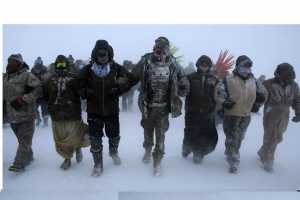. . SUSTAINABLE DEVELOPMENT . .
An article from FAO – Food and Agriculture Organization of the United Nations
Latin America and the Caribbean could be the first developing region to completely eradicate hunger if its governments further strengthen their implementation of a food security plan developed by the CELAC bloc, FAO’s Director-General José Graziano da Silva said today [25 January 2017].

Speaking at the Summit of Presidents and Heads of State and Government of the Community of Latin American and Caribbean States (CELAC) in Punta Cana, Dominican Republic, Graziano da Silva stated that, “CELAC’s Food Security, Nutrition and Hunger Eradication Plan (FNS) represents the crystallization of governments’ political will to eradicate hunger before 2025.”
Approved by CELAC in 2015, the plan promotes comprehensive public policies to reduce poverty, improve rural conditions, adapt agriculture to climate change, end food waste and face disaster risks.
In his address, FAO’s Director-General noted that the CELAC FNS plan is fully in line with high-level global commitments such as the Paris Agreement on Climate Change and the Sustainable Development Goals (SDG).
And the region has made an even more ambitious commitment, he noted: to eradicate hunger by the year 2025, five years before the target established by SDG 2: Zero Hunger.
“This region has all the necessary conditions to achieve this, starting with the great political commitment that sustains the CELAC FNS Plan,” explained Graziano da Silva.
The plan is already bearing fruit throughout the region: Bolivia, Chile, El Salvador, Guatemala, Honduras, Nicaragua and Venezuela relied on it to diagnose their food and nutrition security policies, while Peru used it as a base for the creation of laws regarding food donation and to minimize food losses and waste.
Tackling the double burden of malnutrition
The integral nature of CELAC’s FNS Plan allows countries to not only address hunger but also obesity, which affects 140 million people in the region according to the FAO / PAHO report Panorama of Food and Nutrition Security.
Malnutrition generates enormous economic and social costs, as public health systems must now cope with increasing levels of diabetes, hypertension and heart disease, as well as the consequences of child stunting, wasting and undernourishment.
(Article continued in the right side of the page)
( Click here for the French version of this article or here for the Spanish version.)
Question for this article:
Can UN agencies help eradicate poverty in the world?
(Article continued from the left side of the page)
According to the FAO, one of the worrying trends in the region is the increase in female obesity: the rates of obesity for women are ten percentage points higher than that of men in more than twenty countries in the region.
As a way to o confront this situation, Graziano da Silva highlighted the CELAC FNS Plan’s Gender Strategy, which will ensure that the plan benefits women and men equally and which is already being implemented as a pilot program in four countries: El Salvador, Paraguay, the Dominican Republic and Haiti.
Strengthening family farming to tackle climate change
According to FAO’s Director-General, the impacts of climate change have the potential to reverse the gains made in the fight against hunger and extreme poverty in the region.
“Agriculture is the sector most affected by climate change and one of its main victims are small family farmers, men and women, many of whom struggle daily for their survival,” said Graziano da Silva.
Together with CELAC, FAO is developing a plan of action for family agriculture and rural territorial development that promotes sustainable intensification of production, public procurement and food supply systems, rural services and greater opportunities for rural youth.
FAO is supporting CELAC in putting together a Regional Strategy for Disaster Risk Management for Agriculture and Food Security, which supports resilience and adaptation of farmers through sustainable farming techniques and resource management.
Graziano da Silva stressed that eleven countries in the region have already adhered to the Port State Agreement, which seeks to eradicate illegal, unreported and unregulated fishing, and called on all countries to join in taking care of the sustainability and conservation of their fishery resources.
Peace, food security and sustainable development
In Colombia, the CELAC FNS Plan has supported the creation of a strategy aimed at rehabilitating the livelihoods of vulnerable communities in the central area of the country.
According to FAO’s Director-General, the peace process in Colombia illustrates the indissoluble link between peace, food security and sustainable development, an issue that is at the heart of the 2030 Sustainable Development Agenda.
“There will be no social stability or peace as long as there is hunger, poverty and inequality. Nor can we move forward if we continue to exploit our natural resources. Sustainability is a pre-condition for development,” said Graziano da Silva.
(Thank you to Sergio Tripi and the Good News Agency for calling our attention to this article.)









